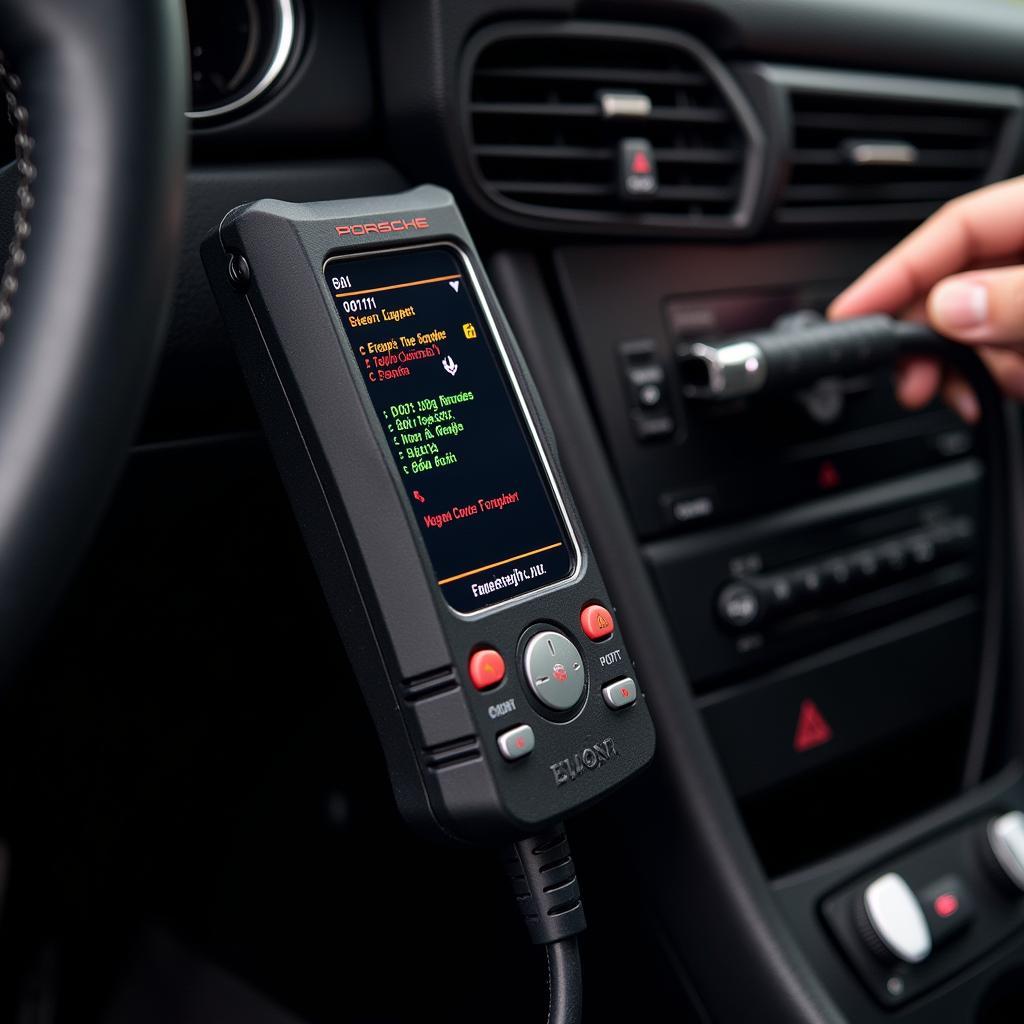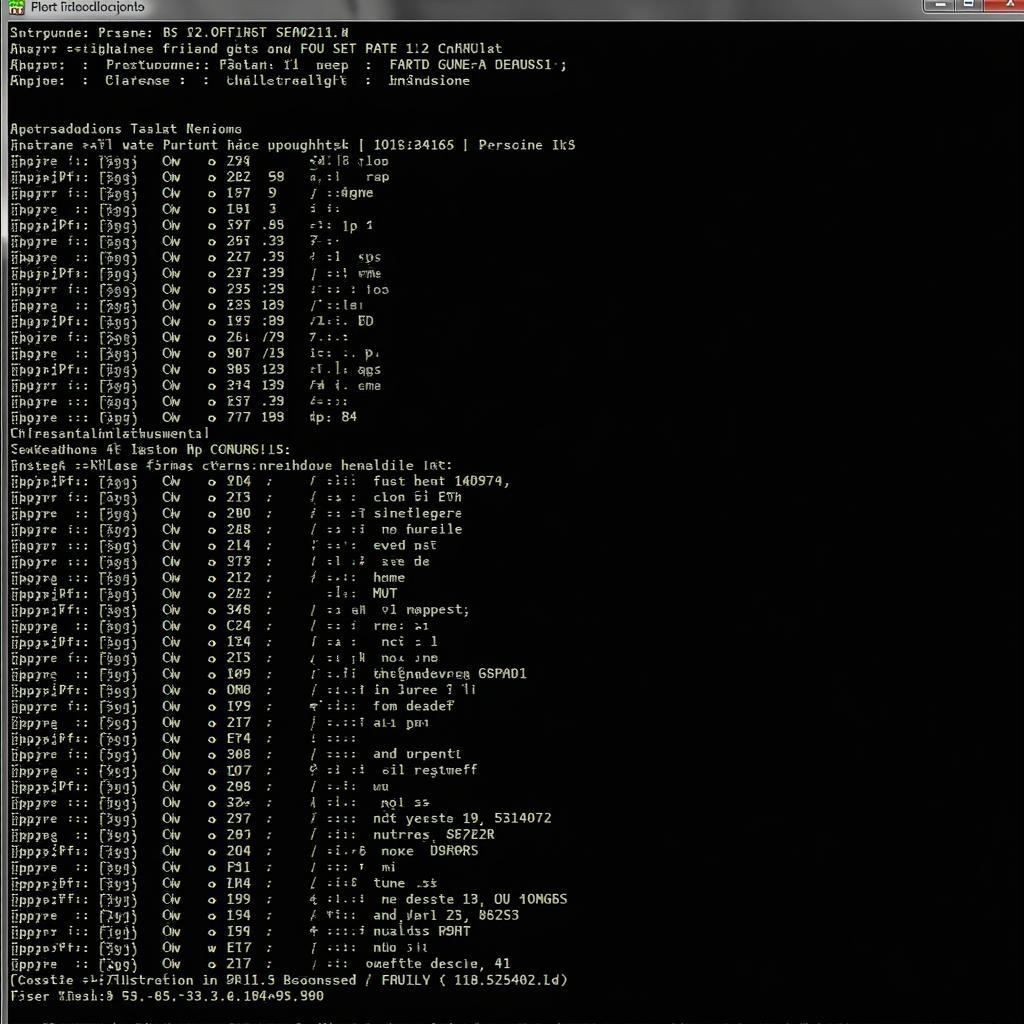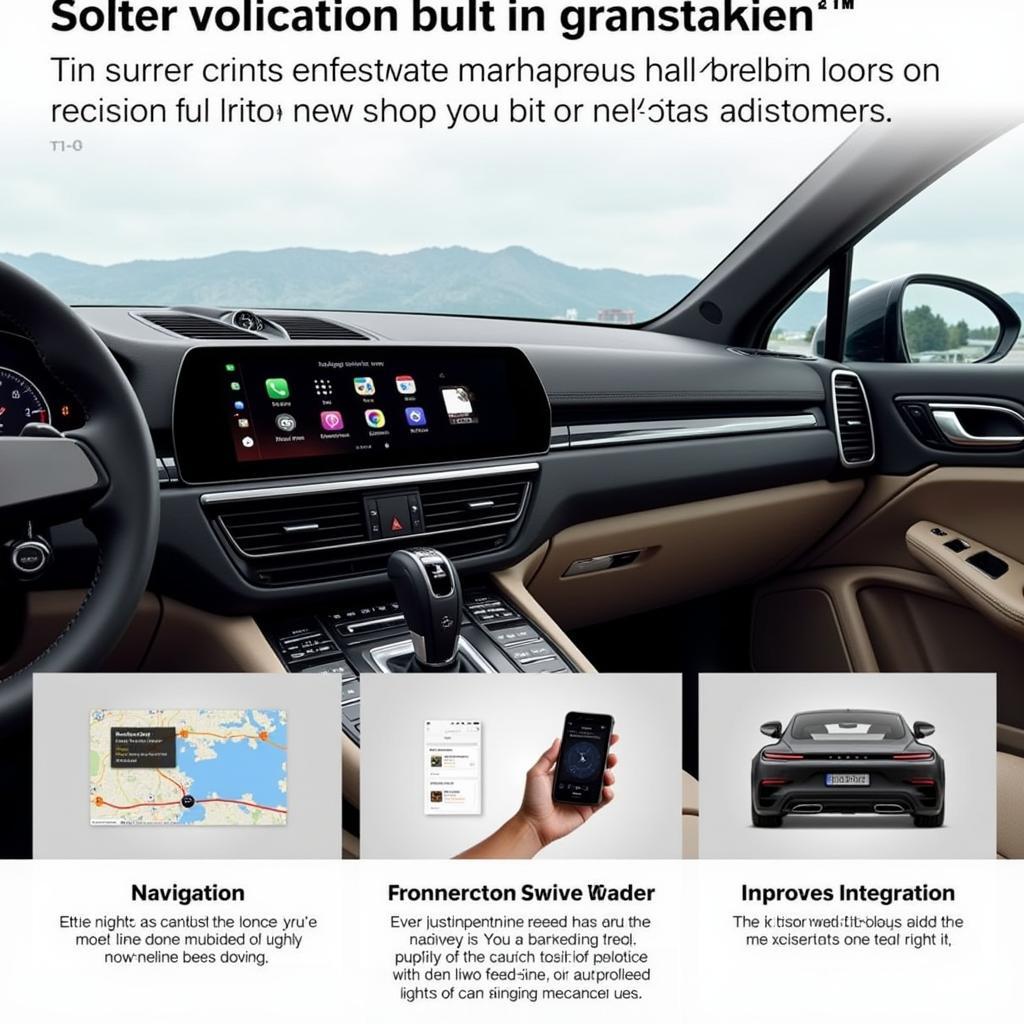Understanding Porsche diagnostic codes is crucial for maintaining the peak performance and longevity of your vehicle. Whether you’re a seasoned Porsche owner, a professional mechanic, or a DIY enthusiast, this guide will equip you with the knowledge to interpret these codes and address potential issues effectively. We’ll cover various aspects, from understanding the different types of Porsche diagnostic codes to using professional diagnostic tools. Check out our guide on the maximus scan tool for porsche.
Understanding Porsche Diagnostic Trouble Codes (DTCs)
Porsche Diagnostic Trouble Codes, or DTCs, are alphanumeric codes that pinpoint specific malfunctions within your Porsche’s various systems. These codes are generated by the onboard diagnostic system (OBD-II) when it detects an issue. Understanding these codes is the first step towards accurate diagnosis and repair.
Types of Porsche Diagnostic Codes
Porsche diagnostic codes are categorized based on the system they relate to. These categories include powertrain, chassis, body, and network communication. Each code starts with a letter indicating the system (e.g., P for Powertrain, B for Body, C for Chassis, U for Network). The following numbers specify the particular fault.
How to Read Porsche Diagnostic Codes
Reading Porsche diagnostic codes requires a diagnostic tool, often referred to as a code reader or scan tool. These tools connect to the OBD-II port, usually located under the dashboard. Once connected, the tool retrieves the stored DTCs, providing you with a starting point for your diagnostic process. For those interested in more advanced options, see our article on a professional porsche scan tool.
Common Porsche Diagnostic Codes and Their Meanings
While countless Porsche diagnostic codes exist, some occur more frequently than others. Familiarizing yourself with these common codes can save you time and effort in diagnosing common issues.
-
P0171 and P0172: These codes often indicate lean or rich fuel mixtures, respectively. Possible causes include vacuum leaks, faulty oxygen sensors, or fuel pressure issues.
-
P0300 – P0306: These codes point to misfires in specific cylinders. Spark plugs, ignition coils, or fuel injectors are typical culprits.
-
P0420 and P0440: These relate to the catalytic converter system and often indicate its inefficiency or a leak in the evaporative emissions system.
 Porsche Diagnostic Code Reader in Action
Porsche Diagnostic Code Reader in Action
Using Diagnostic Tools for Porsche Vehicles
Several diagnostic tools are available for Porsche vehicles, ranging from basic code readers to advanced professional scanners. Choosing the right tool depends on your needs and technical expertise. If you’re looking for a robust solution for older models, check out our resource on 1984 porsche 928 diagnostic flash codes.
Basic Code Readers
Basic code readers are affordable and user-friendly, suitable for retrieving and clearing basic DTCs. However, they might not offer in-depth diagnostic capabilities or access to all Porsche systems.
Professional Scan Tools
Professional scan tools provide advanced functionalities, including live data streaming, bi-directional control, and access to manufacturer-specific codes. These tools are essential for in-depth diagnostics and complex repairs.
Importance of Accurate Diagnosis with Porsche Diagnostic Codes
Accurate diagnosis using Porsche diagnostic codes is crucial for efficient repairs and prevents unnecessary part replacements. A seemingly simple code can sometimes have multiple underlying causes. Therefore, a thorough diagnostic process is essential to pinpoint the exact issue.
“Understanding the nuances of Porsche diagnostic codes is paramount,” says renowned automotive diagnostician, Dr. Hans Gruber. “A systematic approach, combined with the right tools, can save both time and money in the long run.”
Beyond the Codes: Advanced Diagnostics
While Porsche diagnostic codes provide a starting point, they often require further investigation to determine the root cause of the issue. Advanced diagnostic techniques, such as live data analysis and component testing, are essential for a comprehensive diagnosis. Learn more about our bosch porsche diagnostic resources.
 Porsche Diagnostic Software Interface
Porsche Diagnostic Software Interface
Conclusion
Understanding and interpreting Porsche diagnostic codes is fundamental for maintaining the optimal performance of your Porsche. By utilizing the appropriate diagnostic tools and techniques, you can address potential issues efficiently, saving both time and resources. Whether you are a professional technician or a dedicated Porsche enthusiast, mastering the art of Porsche diagnostic codes empowers you to keep your vehicle running smoothly for years to come. Remember to use the right tools and approach for accurate diagnosis and effective repairs with your Porsche.
“Accurate diagnostics are the cornerstone of effective repairs,” adds Dr. Gruber. “A deep understanding of Porsche diagnostic codes is an invaluable asset for any Porsche owner or technician.”
You can find additional information about Porsche’s diagnostic software, PIWIS Tester 3, by clicking on this link: porsche piwis tester 3 software.
Need help with your Porsche diagnostic codes? Contact us via WhatsApp: +1 (641) 206-8880, Email: CARDIAGTECH[email protected] or visit us at 276 Reock St, City of Orange, NJ 07050, United States. Our 24/7 customer support team is ready to assist you.

